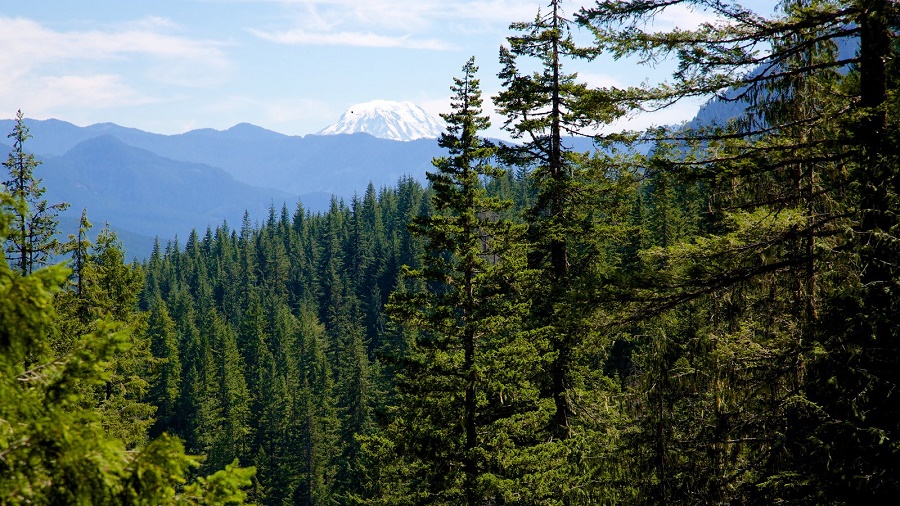Coniferous forests, also known as evergreen forests or taigas, are a majestic biome that stretches across roughly 10% of the Earth's landmass. These sprawling woodlands, dominated by cone-bearing evergreen trees, form a vast green ring encircling the tundra and the North Pole.
Thriving in regions with long, harsh winters and moderate to high precipitation, coniferous forests offer a unique habitat teeming with life adapted to survive the cold and sometimes dry conditions.
The defining characteristic of a coniferous forest is the abundance of conifer trees. These resilient giants are perfectly adapted to their environment. Their needle-shaped leaves, often coated in a waxy layer, are well-suited for shedding snow and minimizing water loss during the long winters. Unlike deciduous trees that lose their leaves in fall, conifers remain evergreen, maintaining their green needles throughout the year. This adaptation allows them to continue photosynthesis even during the short growing season.
Instead of producing flowers and fruits, conifers reproduce using cones. These woody structures house seeds that develop within protective scales. Interestingly, the scales on some cones open up during dry weather, allowing the wind to disperse the seeds. Other cones rely on decomposing or fire to release their seeds.
The size and maturity time of cones vary greatly between species. For instance, the giant sequoia, a resident of temperate coniferous forests, boasts cones that can take a staggering 20 years or more to mature!
The conical shape of many conifers is another ingenious adaptation. This pointed form allows snow to slide off the branches easily, preventing excessive weight buildup that could damage the trees.
The coniferous forest ecosystem provides sustenance for a variety of herbivores and carnivores. Some animals, like the North American porcupine, have specialized adaptations that allow them to consume the spiky needles of conifer trees. Their sharp teeth and strong digestive systems enable them to break down this tough food source.
However, not all creatures are so adept at handling the needles. Most birds, for example, wait for pine cones to fall from the trees before attempting to extract the nutritious seeds within. The crossbill, however, is a notable exception. This unique bird possesses a specialized beak with a crossed tip, perfectly designed for prying open cones and reaching the coveted seeds.
Towering amongst their peers are the awe-inspiring giant redwoods. These titans of the temperate coniferous forest can live for thousands of years, dwarfing other tree species. Their immense size and longevity contribute significantly to the overall health and biodiversity of the forest ecosystem.
The harsh winters of the coniferous forest pose a significant challenge for animal inhabitants. Predators like wolves and wolverines have evolved thick fur coats that provide essential insulation against the biting cold. This dense fur allows them to retain body heat and remain active throughout the winter months.
During the warmer summer months, moose, the largest deer species on Earth, find solace in the cool waters of lakes and ponds within the coniferous forest. Here, they can escape the relentless swarms of biting insects and find aquatic plants to supplement their diet. Interestingly, only male moose grow antlers, which they shed and regrow each year.
Coniferous forests face a growing number of threats, including climate change, deforestation, and insect outbreaks. Rising temperatures can disrupt the delicate balance of the ecosystem, impacting wildlife populations and increasing the risk of wildfires.
Unsustainable logging practices can lead to habitat loss and fragmentation, jeopardizing the long-term health of the forest. Additionally, outbreaks of insects like pine beetles can devastate large swaths of coniferous trees.
Coniferous forests are a captivating and ecologically important biome. From the towering redwoods to the resilient animals that call it home, this evergreen realm offers a glimpse into the remarkable adaptations that allow life to flourish in challenging environments.
Tags:
Science

